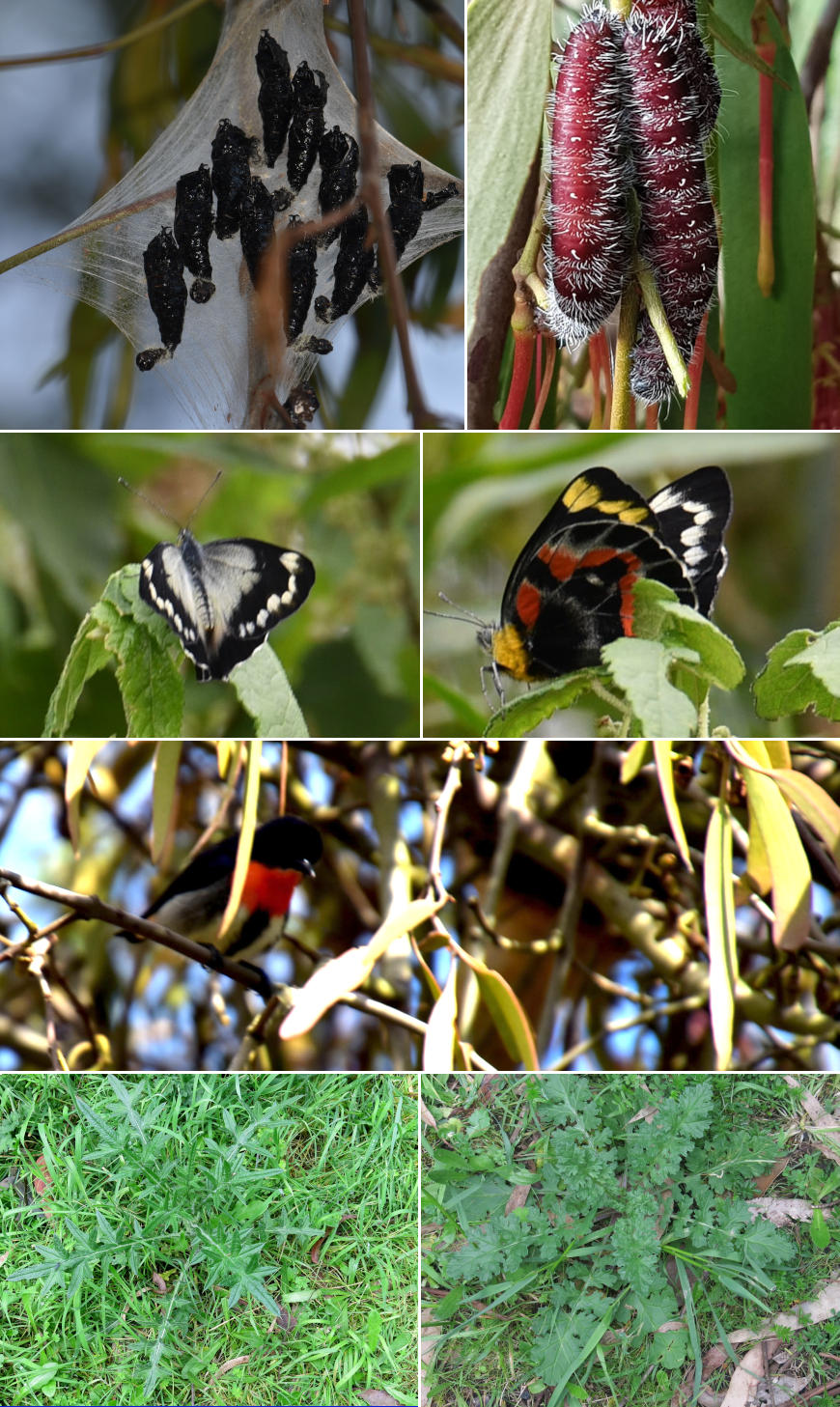Yinnar, Yinnar South Landcare - November 2023
By J. Duncan
The birds and the bees and the flowers and the trees - and the weeds of course
Weeds first
If you are lucky, there is still time to pull or hoe ragwort and hoe thistles at the cabbage stage before they flower. You can also spray them. If the ragwort already has flowers, it is best to manually remove the flower heads first and bag them for green rubbish or to leave them covered in black plastic in the sun to cook. Our group’s weed signs will be rotated around various locations in the district over the coming months. It is still a bit early to spray blackberries, but not a bad time to cut and paint the stems.
Bees and Flowers
National Pollinator Week will be from November 11 to 19 this year. It is a time to observe and celebrate all the wonderful insect life that we need to keep our eco-system working as it should.
To participate in the National Pollinator Count you simply need to observe some flowers for 10 minutes and record the types of pollinators that you see.
To register your results you will need to learn to identify the nine groups of insects, do a test and register your results. There are learning resources on line.
For those so inclined, in conjunction with the pollinator count you can learn a waggle dance and/or be part of a photography competition.
https://www.australianpollinatorweek.org.au/
Learning to love Australian Mistletoes
A lot of the concerns people have about Mistletoe are a carry-over from European thinking. There is only one species of Mistletoe in Europe, and, yes, European Mistletoe is a true parasite and will kill trees. The Mistletoe species that we have in Australia are very different.
There have been some interesting and successful projects to establish Mistletoe to improve habitat for native birds and other fauna. The best known of these is in the City of Melbourne where Mistletoe was established on deciduous street trees. The addition of Mistletoe will add biodiversity; provide winter food resources for birds; and have a local cooling effect on the atmosphere in hot summers. Creeping Mistletoe Muellerina myrsinoides was the species used for this project.
In Australia there are many Mistletoe species, and they are classed as semi-parasitic plants. That is, they do their own photosynthesis and take only water from the parent plant. In return, they will turbo-charge the leaf litter for the invertebrates and fungi that live in it. These organisms in turn break it down to replenish the soil. The improved soil health and availability of nutrients benefits the host tree.
If a tree has a massive infestation of Mistletoe it is usually a sign of stress and the tree will probably die unless some of the Mistletoe is removed, and biodiversity restored to its surrounding environment. e.g. excluding stock will stop further soil compaction; adding understorey and establishing wildlife corridors will allow beetles, lizards, possums and other fauna to reach the tree and keep populations of damaging insects under control.
For birds and native fauna Mistletoes provide flowers over a longer period than most flowering trees and their leaves are apparently delicious for possums and gliders. Birds that forage on the ground are more likely to be found in areas that have Mistletoe, because better leaf litter has more of the insects and invertebrates that they eat.
Mistletoe is destroyed by fire, and it has been shown to be possible to re-establish it in fire affected areas for the benefit of birds, the soil and native fauna.
Some people in our group are keen to start experimenting with trying to grow it.
Mistletoe is spread by the tiny black, white and red or pink Mistletoe birds and a few species of Honeyeater. It is the food plant of the beautiful Imperial Jezebel Butterfly (Delias harpalyce). These are white on top and coloured underneath their wings and much, much bigger than the introduced Cabbage Whites.
There was a Birds Australia webinar on Mistletoe recently, and this is now available on YouTube.
The Ecological Importance of Mistletoe. - YouTube
There is also a project to record Australian Mistletoe plants on the iNaturalist Citizen Science app. It would be very handy to know where it is growing locally, when it fruits and when it flowers. There are expert reviewers on the platform who can identify the species from photos that are posted.
iNaturalist is an online social network of people sharing biodiversity information to help each other learn about nature.
If you visit Morwell National Park, there are currently signs with QR codes linking to iNaturalist on the gates that invite you to record the birds that you see in the Morwell National Park project. This information will help the Friends of the Park with compiling their planned bird book.
Yinnar, Yinnar South Landcare Group
https://www.landcarevic.org.au/groups/westgippsland/yinnar-south/



